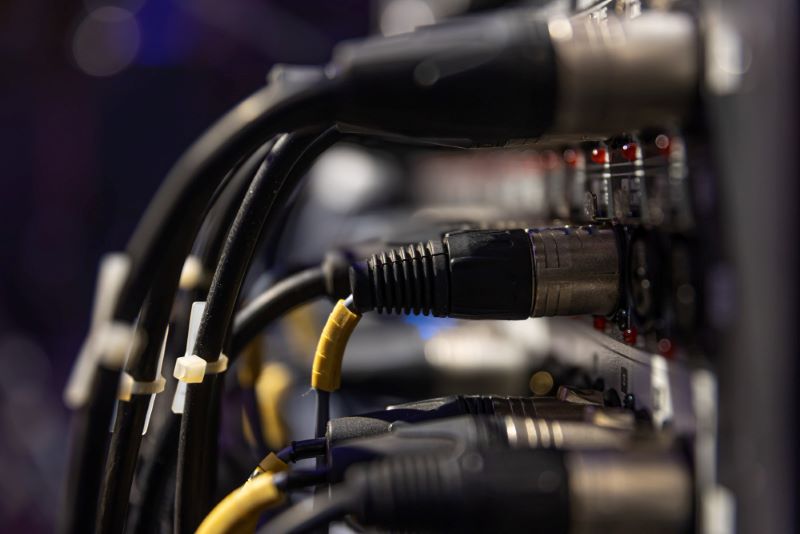IPv4 vs IPv6: How To Move From Familiar Places to New Frontiers
I use the internet every day of my life. Even if I need to meditate or take some time away from the internet, I generally have to go to the internet to find a book, podcast, or app to help me get started with that process. More information exists now than has ever existed in human history, and it lives on the internet. I could spend the rest of my life trying to get through all of it. Given the speed and volume of information available to us, other savvy internet users and I get interested in the complicated issue of proxy servers, especially if you’re wondering what the difference is between proxy addresses labeled IPv4 vs IPv6.
In this article, we’re going to explore the differences between IPv4 proxies and the newer proxy IPv6 addresses. The use of proxies is becoming more common for regular internet users, and they also have become entirely necessary for the business functions of many companies, not just technology-based. For individuals, a proxy can allow you to browse the internet and keep your information away from security threats and sites that harvest data without your consent. For the sake of privacy and security, proxies are necessary barriers between you and bad actors on the internet. However, there are differences between IPv4 vs IPv6 proxies for security.
These types of proxies have the same basic function—they route your personal IP address through a server when you’re doing things on the internet in order to protect your device’s IP address by hiding behind a proxy server IP address. Whether you need a proxy for safe internet browsing, web scraping, or another purpose, the variety of proxies available can serve these purposes. In order to compare particular functioning of an IPv6 vs IPv4 address, you can click around the table of contents and find the best fit for you or your company.
Table of Contents
1. When Did the IPv4 Proxy Come Into Existence?
2. What is the Difference Between an IPv4 and IPv6 Proxy?
When Did the IPv4 Proxy Come Into Existence?

In 1983, IPv4 proxies were first deployed. Ever since then, fast and reliable internet became more necessary with every passing year. Currently, over 90% of websites connect through IPv4 addresses.
Although a computer may have its own IP address, a proxy server provides a different IP address that protects your computer from the possible encroachment of a threatening source. A proxy is basically a super smart doorman to the building of your computer.
The creation of IPv4 addresses did not anticipate the rise of personal computers, laptops, and the prevalence of internet-connected mobile devices that now dominate the world. In addition, IPv6 proxy servers have to be used for mobile devices because they can’t use IPv4 proxies. The reason it’s still the dominant proxy is both because of its longevity (IPv6 addresses were only introduced to the market in 2012). In order to figure out which proxy server is best for you, it’s important to understand the IPv4 vs IPv6 proxy differences in how they work as proxy servers and how many IP addresses they can give you.
What is the Difference Between an IPv4 and IPv6 Proxy?

At the time that the last IPv4 addresses were distributed in 2011, proxy IPv6 addresses had been available for more than a decade. The new proxy IPv6 servers came around in 1998 specifically to address the issue of diminishing availability of IPv4 proxies. If your big question is how many IP addresses in IPv4 vs IPv6 proxy servers, the difference is vast. The major selling point of proxy IPv6 addresses is that they have the capability of creating about 3.4×1038 addresses, compared to the 4 billion available in IPv4 proxies. Whether this number ever runs out remains to be seen.
If you want to immediately know the difference between an IPv6 address and IPv4 address, there’s a very quick way to distinguish them: an IPv4 and an IPv6 address have different notation styles. IPv4 addresses are composed of four bytes, with each byte containing eight bits (32 bits in total). The bytes are expressed in dotted-decimal notation, so it would look like this and is written with periods: 172.16.254.1. On the other hand, proxy IPv6 addresses are expressed in hexadecimal notation, comprised of 16 bytes (and thereby 128 bits), so it’s written in this way with colons: 2001:0DB8:AC10:FE01. For those of us who are not as well-versed in what these codes mean, the 128 bits of the proxy IPv6 address means it can support 2^128 addresses. This wealth of addresses makes a compelling case for the switch over to proxy IPv6 addresses.
Even though proxy IPv6 addresses are the way of the future, IPv4 proxies are still in wide use. Despite the lack of new IPv4 addresses available, most websites and devices communicate through IPv4 proxies. Changing over to IPv6 would have to be a slow, careful process in order to avoid a failure to communicate between proxy IPv6 addresses and websites on devices that are meant to go through IPv4 proxies. At the same time, the more resistant we are to transfer to IPv6 proxies, the more exhausted IPv4 addresses will get.
It is very simple to set up a new proxy IPv6 address, and your proxy provider is likely to give you a way to make sure it works effectively. Here at Rayobyte, we’ve already got you covered with instructions on how to configure your proxy for Windows or Mac, or through IPv6 tunneling.
What Are the Advantages of IPv6 vs IPv4?

The IPv4 vs IPv6 proxy comparison depends on looking towards the future. Though IPv4 proxies successfully handled the first age of the internet, the last new one was created in 2011. If you purchase an IPv4 proxy, it has most definitely been used before and it’s possible that it has even been banned by a website you want to access. Websites are good at learning and retaining information, so using an IPv4 address could be counter-productive to the reason you might even need to use a proxy address.
In terms of security for an IPv4 vs IPv6 address, it’s generally better to use a proxy IPv6 address because it will be clean and doesn’t have any baggage. In addition, IPv6 addresses were originally designed with IPSec (Internet Protocol Security) because they wanted to address the security issue head-on. Although IPv4 proxies can integrate with IPSec, it makes sense that people developing IPv6 addresses decided to place security at the front of their developing project because early internet developers could not have known how much information would be available through the servers. In terms of IPv6 vs IPv4 addresses, the built-in security is preferable.
If proxy IPv6 addresses are faster, have more addresses, and are more secure, you might wonder why so many websites, developers, and ISPs are still using IPv4 addresses. The explanation is simply that IPv4 has been around since the beginning of the internet and IPv6 feels like an unknown quantity in some ways. However, the consistent production of new devices that are internet-enabled, and therefore need IP addresses, means that the changeover to IPv6 is inevitable. Although IPv4 proxies are familiar and still widely in use, the numerical codes they use will be recognized.
Buying An IPv4 vs IPv6 Address

Most proxy providers are still selling IPv4 proxies. The problem with this is that they can’t always tell you if the proxy is secure with everything you need to do because there’s no way to check until you get to the website you need to use. IPv6 also can cycle through a far greater number of IP addresses which improves their functionality for scraping, which will lead to more data and better, more targeted insights for your business overall.
When purchasing a proxy, you’re going to ask the general question: IPv4 vs IPv6, which is better? You have to compare IPv6 vs IPv4 for speed and for security. IPv6 addresses definitely have the highest return on investment in terms of a quality, virgin proxy IPv6 address that is ready to get to work for you. Rayobyte offers both IPv6 and IPv4 proxies, and both do have their advantages. Rayobyte’s IPv4 proxies are all private and offer free automatic IP replacement if you need it. The benefits of using an IPv4 proxy are that they’re already compatible with different systems and protocols.
However, proxy IPv6 addresses give you a greater number of IP addresses, which will allow you to access more sites online with diversity in your IP addresses. You also get the insurance that your IPv6 proxy is completely clean. We have an expert team working around the clock to answer your questions, too. We’re here to ensure the highest quality online experience for individuals and businesses.
To level up your business with data collection, a proxy IPv6 address from Rayobyte is the way to go. The IPv6 addresses we offer have never been used before, so there will be no accidental bans that you’re come across. With the number of IP addresses, you can count on a Rayobyte IPv6 address for diverse use cases, especially if you’re using it for search engines and social media. The proxy IPv6 addresses are also much better for speed and security. For as little as $0.20/ip/month, you can make your business a leader in the digital space with greater access to collecting search engines and social media.
Final Thoughts

Given all of this information, any company with high-volume internet and data collection needs should consider migrating to a proxy IPv6 address. At the same time, an individual who wants to make their way around the internet in constant incognito mode should get a proxy IPv6 address. The benefits of having a clean, unused proxy will make your surfing experience and your proxy work a lot easier and smoother.
Proxies are the best way to keep yourself safe as an individual consumer and are the best way for companies to become digital trailblazers in the use of technology. Whether you’re using a proxy for gleaning information about consumers or ensuring safety in browsing, IPv6 is the right one for you.
The speed at which we produced the quintillions of bytes that process through the internet every day is staggering, even outside of considering the merits of IPv4 vs IPv6 addresses. In the grand history of the earth, the Internet is barely a blip. However, from the perspective of information production, there has never been so much. As much as the original IPv4 proxies gave us, at this point they’ve essentially taken all that they can handle. It’s time to move forward to new frontiers with the proxy IPv6 addresses.
The information contained within this article, including information posted by official staff, guest-submitted material, message board postings, or other third-party material is presented solely for the purposes of education and furtherance of the knowledge of the reader. All trademarks used in this publication are hereby acknowledged as the property of their respective owners.
Sign Up for our Mailing List
To get exclusive deals and more information about proxies.
Start a risk-free, money-back guarantee trial today and see the Rayobyte
difference for yourself!

